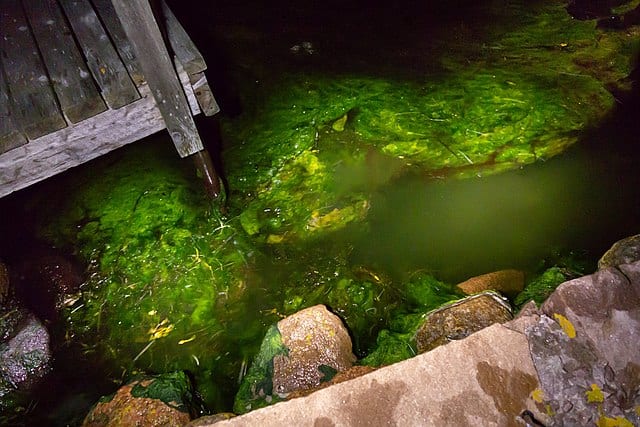You may look at your tank or pond and note that your fish are happily munching on the algae around your pond. Well, if they’re eating that, why bother feeding them? Well, fish eating algae isn’t really about the algae, but more about what is living in the algae.
Algae in Fish Ponds and Tanks
If you add fish, water and sunlight, you will certainly get algae. As we have explained in other articles, algae is more of a human nuisance than a fish one. The biggest risk of algae is when it is clogging your system so much that your filters can’t work, your fish can’t swim or the algae is sucking all of the oxygen out of the water overnight without any replacement. If you are having a major issue with algae in your tank or pond, here are our best recommendations to deal with it without impacting your fish.
Why are my fish eating algae?
Fish eat algae as part of their normal foraging behavior. If the pellets only come once or twice a day, this leaves plenty of time to nibble on whatever they can find. For bottom feeders, such as koi and goldfish, you may notice them rooting around in the bottom of their tank or pond, using their sensitive barbels to find nibbles they may have missed. But it’s not the algae itself that your fish is interested in. Most string algae does not have much nutrition, but what’s living inside it is what your fish really wants to eat: BUGS! Small crustaceans, bugs, invertebrates and larvae use the algae as a temporary home and your fish just love those protein-rich snacks. They slurp the tasty bits off those algae strings like picking raspberries off a vine. Sure, they’ll likely suck down some of the algae, turning their feces a brilliant green color, but it’s a small price to pay for a tasty treat.
Do I still have to feed my fish if they are eating algae?
Most fish kept in captivity rely on a steady diet of pellets. If you have been feeding your fish a complete pelleted diet in the past, it is best to continue with the same level of nutrition. Depending on your pond size, algae load and fish load, you may or may not have enough for your fish to maintain their body size. It is very hard to determine if there is enough nutrition in the algae forest, so feeding a pellet is the best choice for most ponds and tanks. Consider your fish eating algae as a supplement, not the core of their diet. If you are not feeding your fish pellets and they are considered “wild” stocks, leave them to their natural diet. If your fish were introduced and not wild, please get them on a pelleted diet. Here are our best recommendations for pet fish foods.
Is it bad for my fish to eat algae?
Some fish ponds can have out breaks of blue-green algae, also known as cyanobacteria. This is a primitive species of algae that is responsible for toxic algae blooms in many regions. It is typically a free-floating, cellular algae, but can form mats and attached to other types of algae and debris. During these blooms, the algae can severely overwhelm the fish, causing detrimental decreases in oxygen levels along with histopathological changes in their liver, kidneys, gills, intestines and muscles. These blooms can also be deadly to other pets and people exposed to algae that has recently been removed from the pond. These outbreaks are more common in systems with high nitrate pollution which provides a ready food source of the algae, but can get into fish ponds as well.

